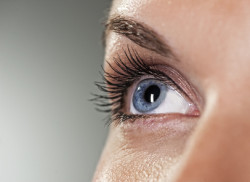Top Class Actions’s website and social media posts use affiliate links. If you make a purchase using such links, we may receive a commission, but it will not result in any additional charges to you. Please review our Affiliate Link Disclosure for more information.

This is alarming, considering that quinolones are some of the most popular antibiotics in the United States but they have been associated with severe side effects. For this particular injury, scientific studies are suggested that moxifloxacin (Avelox) is the quinolone most likely to cause pigment dispersion syndrome.
Pigment dispersion syndrome is an eye condition where the color of the eye’s pigment moves from the iris into other areas of the eye. This condition affects both eyes, and can lead to pigmentary glaucoma and other consequences if not treated in time.
Healthcare providers warn that the tell-tale sign of PDS is when the color of the patient’s eye changes from its healthy bright color, to an almost transparent film around the eye. This happens because the color of the eye is moving to the back of the iris and into other parts of the eye, resulting in its grayer, less vibrant color.
Due to the fact that this pigment color is being filtered into areas it should not be, it can clog the eye’s drainage passage, which allows fluid pressure to build up. This can cause pigmentary glaucoma, as well as the patient suffering blurred vision, seeing colored halos around lights, and mild ocular pain. Healthcare experts warn that these side effects are most likely to occur during intense physical activity, like exercise.
This syndrome can cause a number of other conditions, including Krukenberg spindles and transillumination defects. Krukenberg spindles are when the pigment dispersion occurs in a vertical, spindle-like pattern.
The cornea of the eye is transparent and is what is responsible for covering the iris, pupil, and white filler in visible parts if the eye. The cornea is made up of a single layer of cells called corneal endothelium, which could be compromised with PDS. If this happens, then the fluid levels of the cornea cannot be regulated, leading to events like blurred vision.
Transillumination defects refer to when the iris has trouble filtering light exposure. Essentially, this means that due to the effects of pigment dispersion, the iris loses some of its ability to transilluminate light, which can result in severe light sensitivity.
Overview of Quinolone Eye Injury Allegations
According to scientific studies, the quinolone antibiotic Avelox is roughly five times more likely to cause eye injuries to patients than any other medication. These injuries of course include pigment dispersion syndrome, but uveitis as well. Uveitis is the inflammation of the inner eyes, and is the third leading cause of blindness in the United States.
Despite how many severe side effects quinolone antibiotics seem to carry, only few are mentioned on the drugs’ labels, critics allege. This leaves the pharmaceutical companies open to product liability lawsuits and charges including negligence, false advertising, and concealing information.
Specialized lawyers are preparing to help potential plaintiffs file quinolone lawsuits. If you took quinolone antibiotics and suffered certain eyes injuries including nerve damage, paralysis, peripheral neuropathy, uvetis, retinal detachment, and pigment dispersion syndrome, you may have a legal claim.
Do YOU have a legal claim? Fill out the form on this page now for a free, immediate, and confidential case evaluation. The attorneys who work with Top Class Actions will contact you if you qualify to let you know if an individual lawsuit or class action lawsuit is best for you. [In general, antibiotic injury lawsuits are filed individually by each plaintiff and are not class actions.] Hurry — statutes of limitations may apply.
ATTORNEY ADVERTISING
Top Class Actions is a Proud Member of the American Bar Association
LEGAL INFORMATION IS NOT LEGAL ADVICE
Top Class Actions Legal Statement
©2008 – 2024 Top Class Actions® LLC
Various Trademarks held by their respective owners
This website is not intended for viewing or usage by European Union citizens.
Get Help – It’s Free
Join a Free Fluoroquinolone Antibiotic Class Action Lawsuit Investigation
If you took Cipro, Levaquin, Avelox, Noroxin or Factive and were diagnosed with an eye injury or nerve damage, you may have a legal claim. Submit your information now for a free case evaluation.
An attorney will contact you if you qualify to discuss the details of your potential case at no charge to you.
Oops! We could not locate your form.












